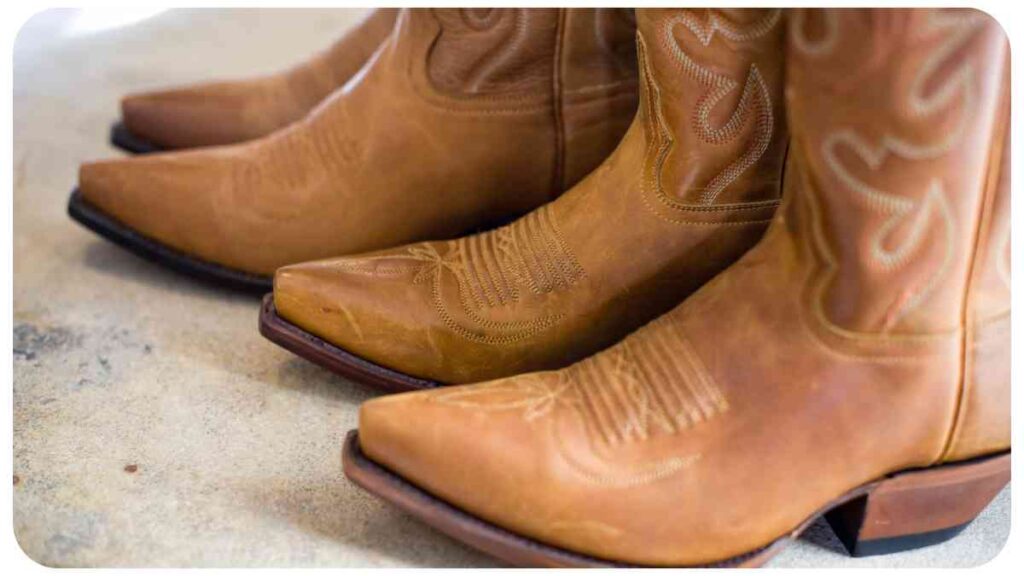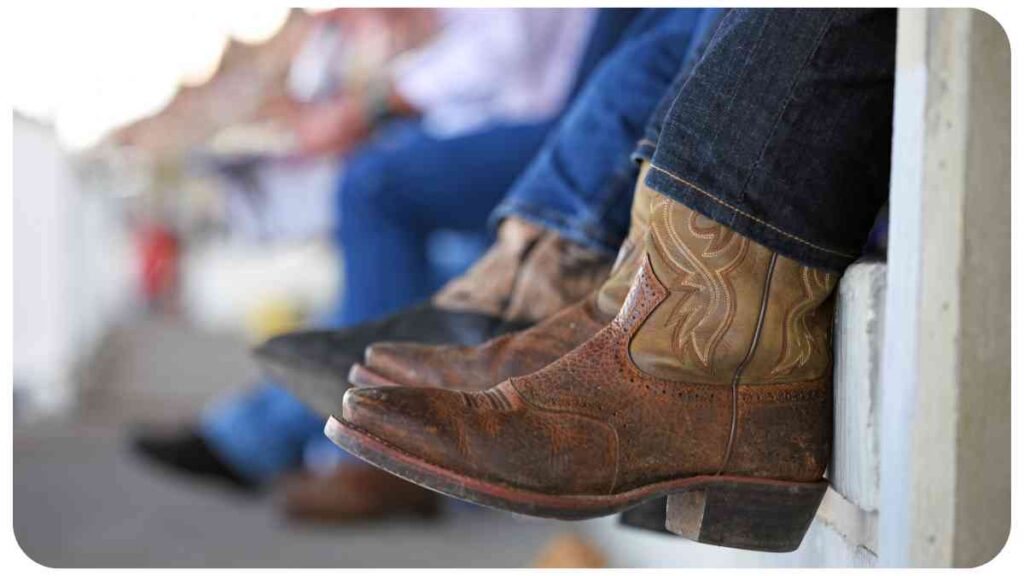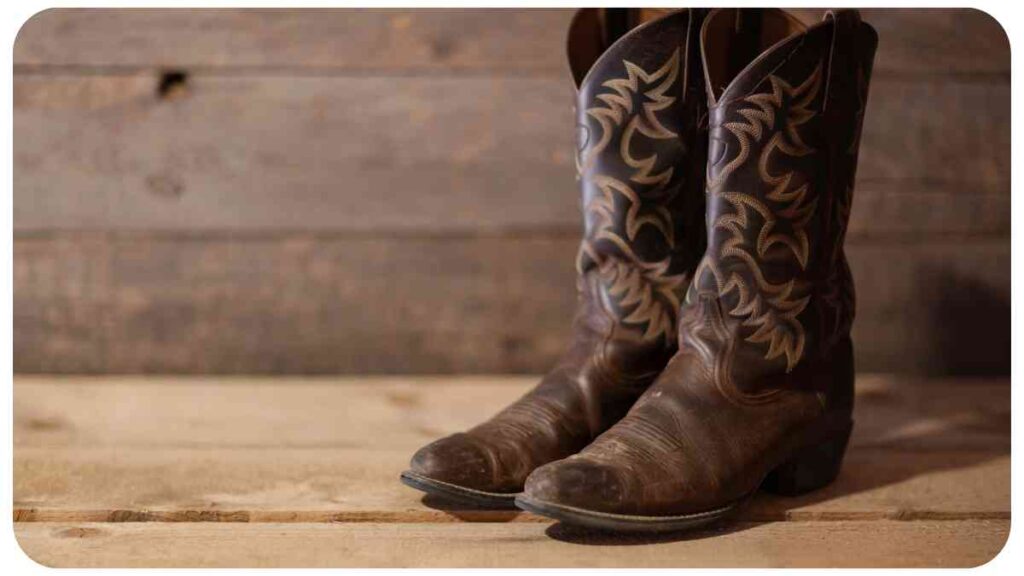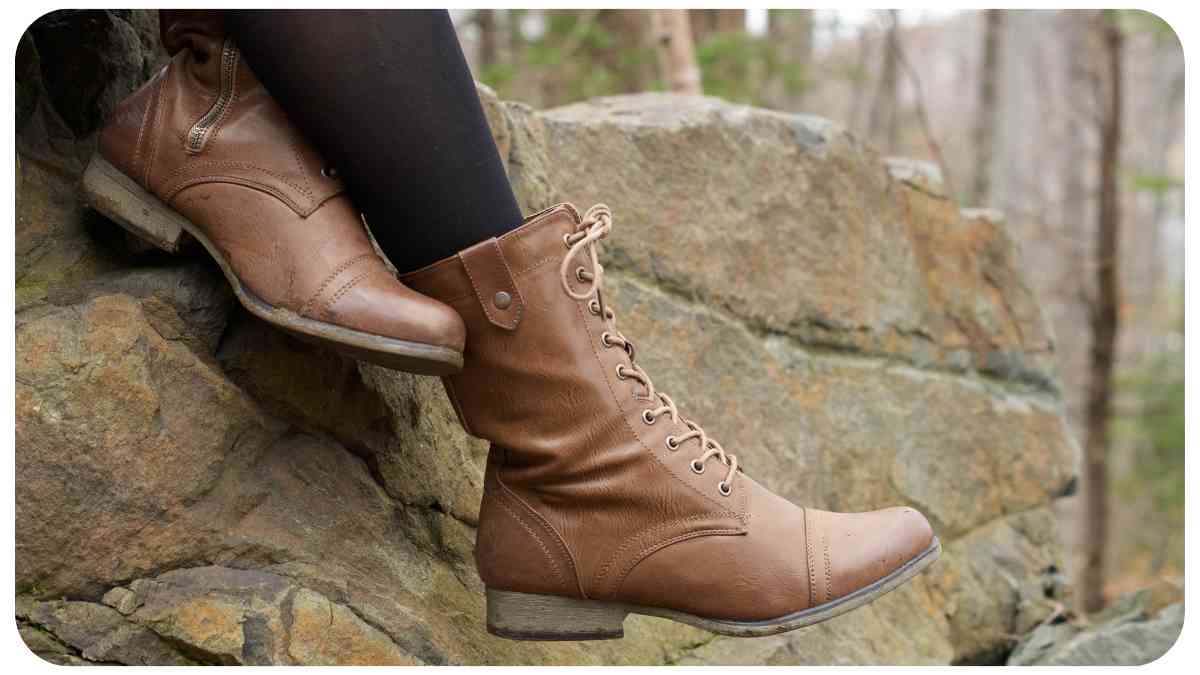Leather boots are not only stylish but also durable and versatile. However, to keep them in top condition and ensure they last for years, proper maintenance is essential. In this comprehensive guide, we will walk you through the steps to effectively maintain your leather boots.
From cleaning and conditioning to repairing and restoring, we will cover everything you need to know. So, let’s dive in and learn how to keep your leather boots looking their best!
| Takeaways |
| Proper care and maintenance are essential for leather boots to ensure longevity. |
| Regular cleaning, conditioning, and polishing help maintain the appearance and durability of leather boots. |
| Use specialized leather care products and avoid harsh household cleaners. |
| Take preventive measures against stains, water damage, and color transfer. |
| Allow for proper ventilation and use odor-absorbing inserts to control odors. |
| Rotate your footwear and avoid extreme weather conditions to prolong the lifespan of your boots. |
| Regularly inspect your boots for signs of damage and address issues promptly. |
| Consider professional cleaning and maintenance for deep cleaning and repairs. |
| Choose appropriate socks and avoid prolonged exposure to sunlight to preserve the quality of the leather. |
| Following proper care practices will ensure your leather boots serve you well for years to come. |
Understanding Leather
Before we delve into the maintenance tips, it’s important to understand the different types of leather. Not all leather is created equal, and each type requires specific care. Here are a few common types of leather you may encounter:
- Full-Grain Leather: This is the highest quality leather, known for its natural markings and durability.
- Top-Grain Leather: Slightly lower in quality compared to full-grain leather but still durable and often used in high-end footwear.
- Genuine Leather: Although the term “genuine” may mislead some, it is actually one of the lowest qualities of leather.
- Suede Leather: Made from the underside of the animal hide, suede has a luxurious texture but requires extra care.
Understanding the type of leather your boots are made of will help you tailor your maintenance routine accordingly.
“In order to maintain your curly hair’s health and beauty, it’s crucial to follow a proper care routine.” – Read the Ultimate Guide to Caring for Curly Hair to learn more about curly hair care.
Cleaning and Conditioning Leather Boots

Cleaning and conditioning leather boots regularly is vital to keep them looking their best and prevent any damage. Here’s a step-by-step guide:
- Remove dirt and debris: Before cleaning, use a soft brush or cloth to remove any dirt or dust from the boots. Be gentle to avoid scratching the leather.
- Use a mild cleanser: Choose a leather-specific cleanser that is gentle on the material. Apply the cleanser to a damp cloth and gently wipe the surface of the boots.
- Do not soak leather: Avoid submerging your leather boots in water, as this can cause damage. Instead, use a damp cloth to wipe away the cleanser.
- Conditioning is key: After cleaning, it’s important to restore moisture to the leather. Apply a leather conditioner using a clean cloth, following the instructions provided by the manufacturer.
- Allow drying time: Let your boots air dry naturally, away from direct heat sources. Avoid using a hairdryer or heater, as excessive heat can damage the leather.
Table 1: Recommended Leather Cleansers and Conditioners
| Brand Name | Cleanser | Conditioner |
| Leather Master | Leather Soft Cleaner | Leather Protection Cream |
| Lexol | Leather Cleaner | Leather Conditioner |
| Bickmore | Bick 4 Leather Cleaner | Bick 4 Leather Conditioner |
Remember to spot test any cleanser or conditioner on a small, inconspicuous area of your boots before applying it to the entire surface.
“When it comes to cleaning suede shoes, the right techniques and tips can make a significant difference.” – Check out this How to Clean Suede Shoes: Tips and Tricks guide for effective suede shoe maintenance.
Storing Leather Boots
Proper storage is important to maintain the shape and condition of your leather boots, especially when they are not in use. Follow these tips to store your boots effectively:
- Clean and condition: Before storing your boots, ensure they are clean and conditioned. This prevents the leather from drying out or developing mold.
- Invest in boot trees: Boot trees help preserve the shape of your boots by providing support and preventing creases. Choose natural materials like cedar to absorb moisture and odors.
- Avoid direct sunlight and heat: Store your boots in a cool, dry place away from direct sunlight and heat sources. Excessive heat can cause leather to crack or fade.
- Use dust bags or old socks: Protect your boots from dust and scratches by storing them in dust bags or covering them with clean, soft socks.
- Rotate your boots: Regularly rotate the boots you wear to prevent excessive wear on a particular pair. This also allows for better ventilation and drying between uses.
By following these storage tips, you can keep your leather boots in excellent condition during periods of non-use.
Table 2: Recommended Boot Trees
| Brand Name | Material | Features |
| Woodlore | Cedar | Adjustable width |
| Allen Edmonds | Cedar | Split-toe design |
| FootFitter | Cedar |
Table 2: Recommended Boot Trees (continued)
| Brand Name | Material | Features |
| FootFitter | Cedar | Full heel-to-toe support |
| Stratton | Plastic | Lightweight and durable |
| BootRescue | Silicone | Flexible and space-saving |
Investing in high-quality boot trees will ensure that your leather boots retain their shape and look their best.
Repairing and Restoring Leather Boots
Over time, leather boots may develop wear, scuffs, or other forms of damage. Learning how to repair and restore them can save you money and keep your boots looking great. Here are some common issues and their solutions:
- Minor scuffs and scratches: For minor scuffs, you can use a leather conditioner or cream to buff them away. Apply the product to a clean cloth and gently rub it into the affected area.
- Deeper scratches and cuts: For deeper scratches or cuts, consider using a leather repair kit. These kits typically include a filler, adhesive, and color-matching dye to restore the damaged area.
- Sole repairs: If the soles of your boots are worn out, take them to a professional cobbler. They can replace the soles or perform any necessary repairs to ensure the longevity of your boots.
- Recoloring or dyeing: If the color of your boots has faded or you simply want a new look, you can consider recoloring or dyeing them. Ensure you choose a dye specifically made for leather and follow the instructions carefully.
Remember to approach more complex repairs or restoration tasks with caution, and don’t hesitate to seek professional assistance if needed.
Table 3: Recommended Leather Repair Kits
| Brand Name | Features |
| LeatherNu | Includes color-matching dye and filler |
| Fiebing’s | Offers a wide range of color options |
| Angelus | Intended for sneakers and leather goods |
By utilizing appropriate tools and products, you can restore your leather boots to their former glory.
“Experiencing issues with your hair straightener? Don’t worry, most common problems can be solved easily.” – Find solutions in the Troubleshooting Common Hair Straightener Issues: A Quick Guide for a smoother styling experience.
Waterproofing Leather Boots

Water exposure can have detrimental effects on leather boots. Therefore, waterproofing them is crucial, especially if you live in a rainy climate or plan to wear your boots in wet conditions. Follow these steps to waterproof your leather boots:
- Clean and dry your boots: Ensure your boots are clean and completely dry before applying any waterproofing product.
- Choose a waterproofing agent: Look for waterproofing sprays or waxes that are specifically formulated for leather. These products create a protective barrier against water and stains.
- Test in a small area: Before applying the waterproofing product to the entire boot, test it on a small, inconspicuous area to ensure it doesn’t affect the color or finish of the leather.
- Apply the waterproofing agent: Following the instructions on the product, evenly spray or rub the waterproofing agent onto the surface of the boots. Pay extra attention to the seams and stitching.
- Allow drying time: Let your boots dry naturally in a well-ventilated area. Avoid using heat sources to speed up the drying process, as it can damage the leather.
Table 4: Recommended Waterproofing Products
| Brand Name | Type | Features |
| Kiwi | Spray or Wax | Suitable for various leathers |
| Nikwax | Waterproofing Wax | Environmentally friendly |
| Obenauf’s | Heavy-Duty LP | Excellent for work boots |
Waterproofing your leather boots will help protect them from water damage, extending their lifespan and keeping your feet dry.
Polishing and Buffing Leather Boots
Regular polishing not only enhances the appearance of your leather boots but also helps to protect the leather from cracking and drying out. Follow these steps to polish and buff your boots:
- Clean the boots: Before polishing, make sure your boots are clean and free of any dirt or debris. Use a soft brush or cloth to remove any surface dust.
- Choose the right polish: Select a high-quality leather polish that matches the color of your boots. Consider a cream polish for conditioning and color restoration or a wax polish for a shiny finish.
- Apply the polish: Using a soft cloth or a polish applicator brush, apply a small amount of polish to the boots. Start with circular motions, covering the entire surface of the boots.
- Allow drying time: Let the polish sit and dry on the boots for a few minutes, as instructed on the polish container. This allows the leather to absorb the nourishing elements from the polish.
- Buff the boots: Using a clean cloth or a horsehair brush, gently buff the boots to a shine. Apply light pressure and use quick, back-and-forth motions to achieve a glossy finish.
- Repeat if desired: If you prefer a higher shine, you can repeat the polishing and buffing process.
Table 5: Recommended Leather Polishes
| Brand Name | Type | Features |
| Saphir | Cream or Wax | High-quality French brand |
| Meltonian | Cream or Wax | Wide range of color options |
| Lincoln | Wax | Excellent for shine |
Regular polishing and buffing will not only keep your leather boots looking impeccable but also protect them from everyday wear and tear.
“Discover the impact of using silk or satin pillowcases and how they can benefit your hair.” – Explore the differences in the Silk vs. Satin Pillowcases: Do They Really Benefit Your Hair? guide for luxurious hair care.
Removing Stains from Leather Boots

Accidents happen, and your leather boots may encounter stains at some point. Here are some tips to help you effectively remove common stains from your boots:
- Water stains: If your boots get wet and develop water stains, dampen the entire surface of the boots with a clean cloth. Allow them to air dry naturally, and the water stains should disappear as the leather dries.
- Ink stains: Ink stains can be stubborn, but they can often be removed with a specialized ink remover for leather. Apply the ink remover to a clean cloth and gently blot the stain, working from the outside towards the center.
- Oil and grease stains: For oil or grease stains, sprinkle a small amount of talcum powder or cornstarch on the affected area. Let it sit overnight to absorb the oil, then brush off the powder and wipe away any residue with a clean cloth.
- Salt stains: Mix equal parts vinegar and water, then dip a clean cloth in the solution. Gently dab the salt stains to remove them. Afterward, wipe the boots with a damp cloth to remove any vinegar residue.
Table 6: Tips for Removing Common Stains
| Stain Type | Removal Method |
| Water | Damp cloth, air drying |
| Ink | Specialized ink remover for leather |
| Oil/Grease | Talcum powder or cornstarch, followed by wiping |
| Salt | Vinegar and water solution, followed by damp cloth |
By promptly attending to stains and using appropriate stain removal techniques, you can ensure your leather boots remain spotless and pristine.
Dealing with Odor in Leather Boots
Over time, leather boots can develop unpleasant odors, especially if they are frequently worn or exposed to moisture. Here are some strategies to help eliminate odor from your leather boots:
- Allow for proper ventilation: After each use, remove your boots and expose them to fresh air. This allows any moisture inside the boots to evaporate and reduces the likelihood of odor-causing bacteria growth.
- Use odor-absorbing inserts: Place odor-absorbing inserts or sachets inside your boots when they are not in use. This can help absorb moisture and neutralize odors. Materials like activated charcoal, baking soda, or cedar chips work well for this purpose.
- Apply deodorizing sprays or powders: Use a leather-friendly deodorizing spray or powder designed for shoes. Apply the product inside your boots, following the instructions provided.
- Consider using a boot dryer: If your boots frequently get wet, investing in a boot dryer can help remove moisture and prevent odors. Follow the instructions provided to safely dry your boots.
- Cleaning the insoles: Remove the insoles from your boots and clean them separately. Use mild soap and warm water to gently wash the insoles, then allow them to dry completely before inserting them back into the boots.
Table 7: Recommended Odor Control Products
| Brand Name | Type | Features |
| Moso Natural | Charcoal Inserts | Chemical-free and long-lasting |
| Rocket Pure | Deodorizing Spray | Suitable for multiple types of shoes |
| SmellWell | Odor Absorbing Pouch | Includes moisture-wicking capability |
By employing these odor control techniques, you can keep your leather boots smelling fresh and clean.
Increasing the Lifespan of Leather Boots
To maximize the lifespan of your leather boots and ensure they serve you well for years to come, consider incorporating the following practices into your routine:
- Rotate your footwear: Give your leather boots a break and rotate them with other pairs of shoes. This allows the leather to rest, preventing excessive wear and tear.
- Avoid extreme weather conditions: Whenever possible, try to avoid wearing your leather boots in extreme weather conditions, such as heavy rain, snow, or extreme heat. These conditions can cause damage to the leather.
- Professional cleaning and maintenance: Periodically, take your leather boots to a professional cobbler for deep cleaning, conditioning, and repairs. They have the expertise to handle complex issues and can help extend the lifespan of your boots.
- Regular inspections: Routinely inspect your boots for any signs of damage or wear. Catching problems early allows for prompt repairs and prevents further damage.
- Wear appropriate socks: Choose socks that are moisture-wicking and breathable. This helps keep your feet dry and minimizes the potential for odor and moisture buildup inside the boots.
- Avoid excessive exposure to sunlight: Prolonged exposure to direct sunlight can fade and damage the leather. Store your boots in a cool place when not in use and limit their exposure to sunlight.
By following these practices, you can significantly extend the lifespan of your leather boots and enjoy them for many years.
“Aloe vera has numerous benefits, from soothing the skin to promoting hair health and more.” – Uncover the potential of this natural ingredient in the Understanding the Benefits of Aloe Vera: A Comprehensive Guide.
Further Reading
Here are some additional resources for further information on caring for leather boots:
- Real Men Real Style – Leather Boots Care Guide: This guide provides detailed tips and steps to properly care for and maintain leather boots, including cleaning, conditioning, and polishing techniques.
- Grisport Shoe Care Guide: The Grisport Shoe Care Guide offers comprehensive information on how to care for leather footwear, with specific tips for cleaning, conditioning, and protecting different types of leather.
- Zizzi Fashion – How to Care for Your Leather Boots: Zizzi Fashion provides a helpful guide on caring for leather boots, covering topics such as cleaning, conditioning, waterproofing, and general maintenance tips.
FAQs
Here are some common questions about caring for leather boots:
How often should I polish my leather boots?
It is recommended to polish your leather boots every 2-3 months or as needed. Regular polishing helps maintain the leather’s shine and provides added protection.
Can I use regular shoe polish on leather boots?
A: It is best to use polish specifically designed for leather boots. Regular shoe polish may contain ingredients that can damage the leather surface or alter its appearance.
How do I remove salt stains from my leather boots?
Mix equal parts vinegar and water, then apply the solution to a clean cloth and gently blot the salt stains. Wipe the boots with a damp cloth afterward to remove any vinegar residue.
Can I wear leather boots in snowy or rainy conditions?
While many leather boots have some level of water resistance, it is best to avoid wearing them in heavy snow or rain. Excessive moisture can damage the leather. If you do wear them in wet conditions, ensure you waterproof them beforehand and dry them properly afterward.
How can I prevent my leather boots from drying out?
Proper conditioning is essential to prevent leather boots from drying out. Apply a leather conditioner regularly to keep the leather supple and moisturized. Avoid exposing your boots to excessive heat or direct sunlight, as this can accelerate drying and cause damage.

Hi, you! I’m Hellen James. I’m a beauty and fashion writer who loves to make the world a little more stylish and I’d love for you to join me in the fun! I’ve been writing about beauty and fashion since I was a kid, but it wasn’t until recently that I really knew what it meant to be a real expert.

